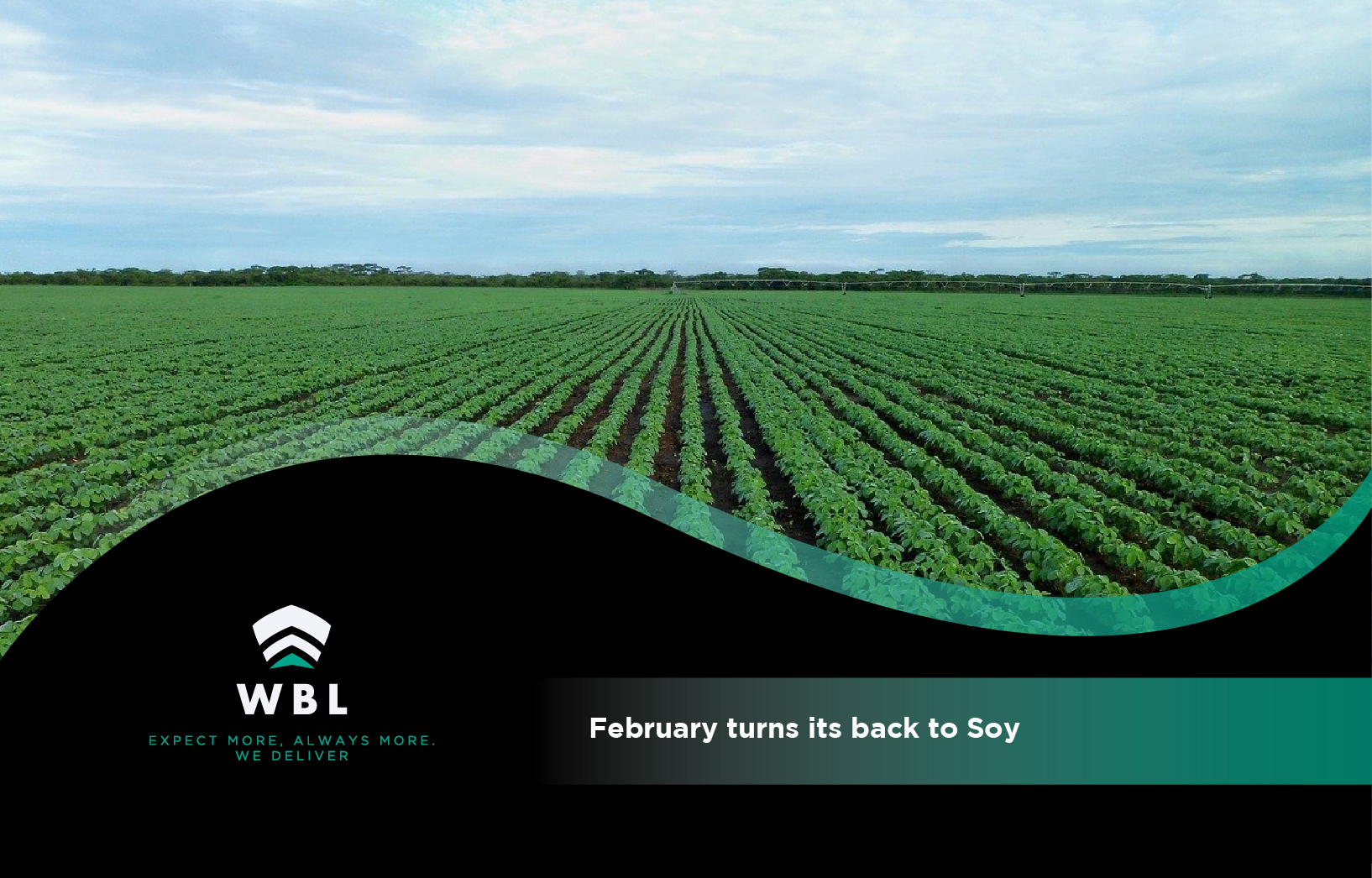February turns its back to soy: it rained 23% of the historical rate and the forecast is not good
The regular and bad condition of the SB rose again to 30% and many good frames can collapse. Aiello warns: “a high-pressure center on the south of the continent will have the effect of little or no rain during the next 10 days.”
Stable time for the week
An increase in instability is expected towards the end of the forecasted period, Wednesday, March 3rd. The center of high pressure would began to move to the east.
“The medium-term forecast models indicate that the rains will continue reluctant in the remainder of February and probably during the beginning of the new month,” said Jose Luis Aiello, MD Cs. Atmospheric.
The monthly average of the last 30 years indicates that the region usually receives in February between 100 mm and 120 mm with a clear gradient in favor of the east. But the average of the 36 stations in the region accumulated to date only 25 mm. The highest accumulated monthly were registered in the west of province of Cordoba and NE of the province of Buenos Aires.

What is the status of premium SB in the region today?
The situation of SB is extremely variable, as shown by the reserve of useful water for first-class SB as of February 24th. The east of Cordoba and the eastern fringe of Santa Fe are exceptionally good. There, despite the tremendous lack of water in February, SB are only needing between 10 mm to 40 mm. The most affected SB are in the extreme south and the western fringe of province of Santa Fe and the north Buenos Aires, especially the west. There, the need for water for the crop rises from 40 to 100 mm. The condition of the crop in the core region shows that 40% of the area is in excellent to very good condition, 30% fair to poor and in the middle, 30% that for now is good but with many doubts. Regarding the good lots (70% of the area) in the city of Pergamino, the technicians say that “they are fine, the condition varies a lot according to the quality of each lot, rotations, handling, and the amount of rainfall they received. They are holding up well, in full fill, but what is the impact going to be? You can’t tell, with 10 days ahead of you without water… Add thrips, spider mites and bolillera. There is great uncertainty”. In the western fringe of Santa Fe, an agronomist who was visiting the area today said: “the SB in good fields have lost 10% of their potential. In intermediate fields 20 to 25%. In regular fields 40 to 50%. This is today (2/25), you have to see how they get to the day of the next rain”. In General Pinto, there are already cases where they estimate losses of 50%. “But everything is very variable according to each batch”, they conclude.
Aiello: No forecasts in favor for the next 10 days
“The current situation is conditioned by the position of a high-pressure center on the south of the continent, that will have the effect of an episode of little or no rain during the next 10 days. Temperature anomalies will be positive. These two factors will condition a dry pulse”, explains Aiello. “The entry of colder and drier air masses conditioned (during the last seven days) the development of rainfall in much of the country, mainly over the center of the core area and the north of Buenos Aires. Today the highest probability is that the shortage scenario will extend for the next 10 days because although we would have a supply of water, it would be low or moderate amounts. This scenario is for the central region of the country and could be more serious in the south of the province of Buenos Aires. This behavior is more linked to a temporary regional dynamic and is not so dependent on the forcing Niña. The water reserves, even despite the retraction of the rains, are not so unfavorable thanks to the unusual volume of water that closed the month of January. Something that allowed a collection of moisture in the soil that today takes on a more than the significant value”, he concludes.
Countdown to the maize crop in the region
In Pergamino the crop of the first batches of maize began early. Although these are trials, the results are between 80 to 110 ql / ha, 20% below last year. For the rest of the region, the countdown begins: it will start in 10 days. In the city of San Antonio de Areco, they estimate 50 ql / ha. In eastern Cordoba, as in the city of Monte Buey, an average yield of 110 to 120 ql/ ha is expected. The south center of Santa Fe could take the podium of the highest yields. In El Trébol city some lots can exceed 130 ql / ha and the average yield is calculated at 110 ql / ha. An average of 96 ql / ha is estimated for the core region, 10 quintals less than in the last cycle.
Source: https://bcr.com.ar/
For more info visit
https://www.linkedin.com/company/wbl-shipping-agency/
